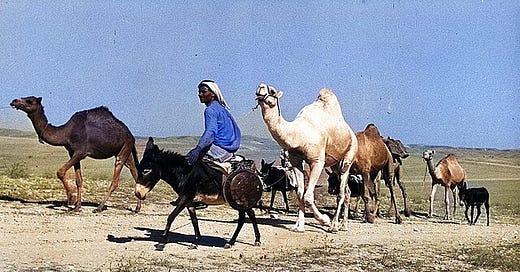The story of Bedouin-Israeli relations in the south during the War of Independence defies the simple narratives of Arab-Jewish conflict. Rather than forming a monolithic front against the emerging Jewish state, the Negev Bedouin tribes made independent decisions based on tribal interests, local conditions, and assessments of the war’s likely outcome. Several major Bedouin tribes ultimately aligned themselves with Israel, becoming valuable allies in securing the Negev for the Jewish forces.
The Pre-War Scene
Prior to the outbreak of hostilities in 1948, the Negev Bedouin were caught between multiple competing forces who sought their allegiance. The Palestinian leadership was divided between two main factions: Hajj Amin al-Husseini, the Mufti of Jerusalem and leader of the Arab Higher Committee, who called for war against the Zionists; and the more moderate Nashashibi clan, allied with King Abdullah of Transjordan, who sought to incorporate Palestine under Hashemite rule.
Working with the Muslim Brotherhood, the Mufti’s supporters recruited Bedouin tribes into military units. They won over several tribal leaders, including Sheikh Abu Sittah of the Tarabin tribes near Gvulot, and leaders of the Hanajirah confederation in the northwest Negev. These sheikhs encouraged their followers to attack Jewish convoys and sabotage the newly constructed water pipeline that served both Jewish settlements and Bedouin communities. But not all the sheikhs followed suit. The al-Huzayyil tribe and their affiliated fellah-Bedouin chose neutrality, maintaining close relations with nearby Jewish settlements. Meanwhile, King Abdullah’s representatives successfully recruited tribes from the Tiyaha confederation, particularly those in the northwest. The Bedouin tribes operated as independent decision-making units, with each sheikh evaluating the situation based on his tribe’s specific circumstances and interests. Even within the same confederation, different tribes could choose opposing sides.
Thanks to new paid subscribers over the past month, I’m now in 27th place in Substack’s ‘Rising’ chart for the international category (does this make me The Twenty-Seventh City of Substack?). If you want to help me keep rising, you can do so by parting with $50 to secure an annual premium subscription (there’s also a $5 monthly option). In exchange, you’ll get an annual subscription with two exclusive articles a month (including this one) and a special monthly recommendations email. Most importantly, you’ll be helping Love of the Land rise to the top!
Keep reading with a 7-day free trial
Subscribe to Love of the Land to keep reading this post and get 7 days of free access to the full post archives.



